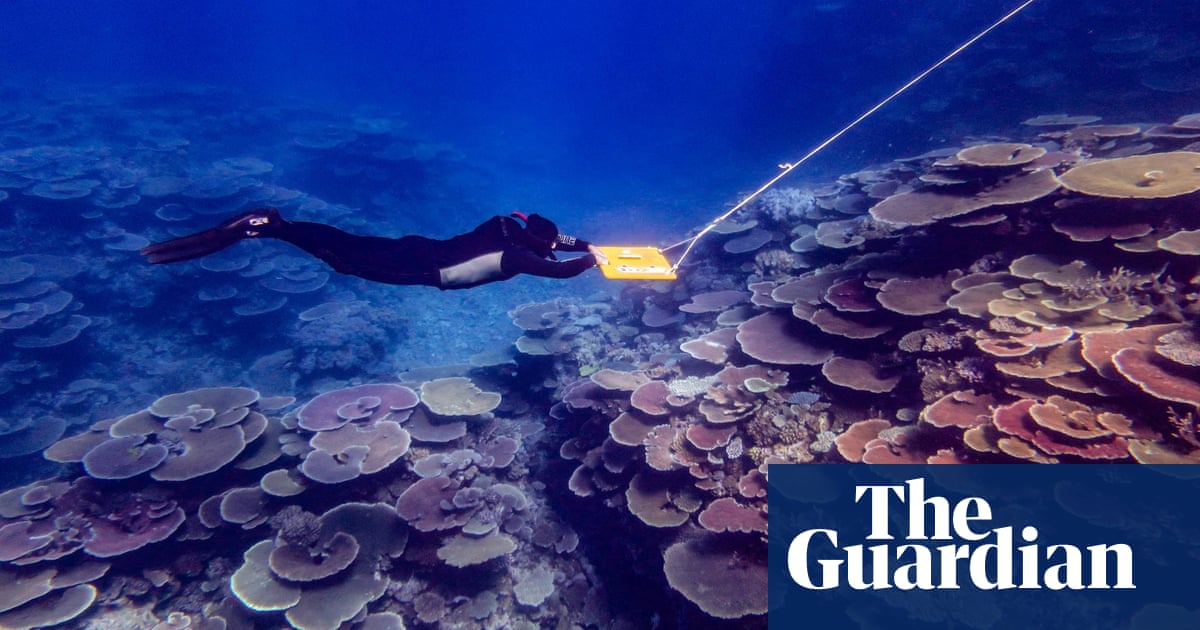
The risk of widespread coral bleaching across the Great Barrier Reef has subsided after cloud and rain over the past 10 days caused “substantial cooling” of heat-stressed corals, according to the government’s reef management authority.
Scientists and conservationists have feared it could suffer its sixth major mass bleaching outbreak this summer with record high temperatures over the reef in December.
But now there is cautious optimism the world heritage-listed reef – the ocean’s biggest at 2,300km long – could escape a major event with the potential to kill and weaken corals.
A statement to Guardian Australia from the Great Barrier Reef Marine Park Authority (GBRMPA) said monsoonal weather in north Queensland over the past 10 days “caused substantial cooling, and the temperatures on much of the reef are now below the average for February”.
“While the forecast for the rest of the month remains for above average temperatures, it is expected this will only be about half a degree warmer,” the statement said.
“The current thermal anomaly and the forecasts have resulted in a diminished risk of mass bleaching on the reef this summer.”
But the authority warned the reef had “already accumulated substantial heat stress over the summer” and weather over the next few weeks would be “critical in determining the final outcome”.
Coral bleaching happens when the algae that gives the coral its colour and most of its food is expelled, leaving just the white skeleton visible. Depending on the severity, corals can recover or die.
Sign up to receive an email with the top stories from Guardian Australia every morning
Forecasts of heat stress over the reef from the US government agency the National Oceanic and Atmospheric Administration show almost no areas currently forecast to hit levels where bleaching was likely.
This contrasts with forecasts in late December that suggested by mid-February large areas of the reef north of Cairns would be at risk of bleaching severe enough to kill corals.
Townsville-based Dr William Skirving, of Noaa’s Coral Reef Watch, said a monsoonal trough had brought with it cloud and rain over large areas of the reef.
“It’s looking much better than it was a couple of weeks ago,” he said.
Both Noaa and Australia’s Bureau of Meteorology have said temperatures over the reef in December were the highest on record.
Associate Prof Tracy Ainsworth, a coral scientist at the University of New South Wales, said the change in outlook was “welcome news for this year on the reef”.
But she said in most years “we are seeing heat stress events occurring on irreplaceable coral reef ecosystems around the world”.
“This is a reprieve from severe conditions that would cause coral mortality. But there has still been heat stress accumulating and every year now we are asking how bad things will be. That’s a crazy position to be in.
“These events are increasing in intensity as well as becoming more frequent.”
The reef has seen five mass bleaching events – in 1998, 2002, 2016, 2017 and 2020 – driven by increasing heat in the oceans caused by rising greenhouse gas levels.
Some coral species cope better with heat stress than others and scientists say successive bleaching events have reduced the numbers of less heat-tolerant corals.
Some scientists studying the reef say because of this shift, more heat is needed to cause the same amount of bleaching as was seen in earlier outbreaks.
Last week GBRMPA said it had received several reports of minor bleaching from across the reef with areas of minor to moderate bleaching between Townsville and Port Douglas.
The amount of coral over the reef has been going up in the last two years, but the Australian Institute of Marine Science has said that increase is underpinned by fast-growing corals more susceptible to bleaching.
Ainsworth said this was raising the likelihood of widespread coral bleaching in the coming years when the next major event unfolded.
Last year the 21-country world heritage committee ignored advice from Unesco that the reef should be placed on a list of sites “in danger” because of impacts from bleaching and poor progress on cutting pollution.
The committee is due to consider the reef’s plight again at a meeting scheduled for July in Russia.












